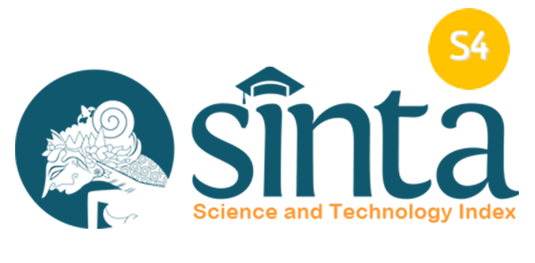Voices Unheard: Teachers' Perspectives on Students' Speaking Challenges in the Classroom
DOI:
https://doi.org/10.36663/tatefl.v5i2.895Keywords:
EFL, Speaking’ Challenges, Teachers’ PerspectiveAbstract
This qualitative study examines the challenges that students at a private Islamic junior high school in Palembang encounter when learning to speak, with an emphasis on the viewpoints of the teachers. Data collection involved structured interviews and classroom observations to gather insights into students' challenges. Participants included teachers and students selected through purposeful sampling. Thematic analysis was employed to analyze the data, revealing themes such as students' fear of making mistakes, difficulty in language comprehension, and the use of native language in learning. The importance of fostering a positive and inclusive learning atmosphere where students feel comfortable taking linguistic risks and expressing themselves freely is emphasized in the conclusion. Strategies such as providing targeted instruction in phonetics and vocabulary, and balancing the use of the native language to support English language acquisition, are essential. This research contributes to understanding the complexities of language learning and provides insights for educators to enhance students' speaking skills effectively
Downloads
References
Antony, M. M., & Swinson, R. P. (2017). The shyness and social anxiety workbook: Proven, step-by-step techniques for overcoming your fear. New Harbinger Publications.
Anugrah, P. M. (2022). Teachers’ challenges in teaching speaking through online learning during Covid-19 pandemic. The Art of Teaching English as a Foreign Language (TATEFL), 3(1), 25–34. https://doi.org/10.36663/tatefl.v3i1.140 DOI: https://doi.org/10.36663/tatefl.v3i1.140
Aryanti, R. D., & Santosa, M. H. (2024). A systematic review on artificial intelligence applications for enhancing EFL students’ pronunciation skill. The Art of Teaching English as a Foreign Language (TATEFL), 5(1), 102–113. https://doi.org/10.36663/tatefl.v5i1.718 DOI: https://doi.org/10.36663/tatefl.v5i1.718
Birenbaum, M. (2014). Conceptualizing assessment culture in school. In C. Wyatt-Smith, V. Klenowski, & P. Colbret (Eds.), Designing assessment for quality learning (pp. 285–302). Springer. https://doi.org/10.1007/978-94-007-5902-2 DOI: https://doi.org/10.1007/978-94-007-5902-2_18
Braun, V., & Clarke, V. (2006). Using thematic analysis in psychology. Qualitative Research in Psychology, 3(2), 77–101. https://doi.org/10.1191/1478088706qp063oa DOI: https://doi.org/10.1191/1478088706qp063oa
Creswell, J. W. (2014). Research design, qualitative, quantitative, and mixed methods approcahes (4th ed.). SAGE Publications Ltd.
Cummins, J. (1984). Bilingualism and special education: Issues in assessment and pedagogy. Multilingual Matters.
Fulcher, G. (2014). Testing second language speaking. Routledge. DOI: https://doi.org/10.4324/9781315837376
García, O. (2009). Education, multilingualism and translanguaging in the 21st century. In T. Skutnabb-Kangas, R. Phillipson, A. K. Mohanty, & M. Panda (Eds.), Social Justice through Multilingual Education (pp. 140–158). Multilingual Matters. https://doi.org/10.21832/9781847691910-011 DOI: https://doi.org/10.21832/9781847691910-011
Harmer, J. (2015). The practice of English language teaching (With DVD). pearson.
Heriansyah, H. (2012). Speaking problems faced by the English department students of Syiah Kuala University. Lingua Didaktika: Jurnal Bahasa Dan Pembelajaran Bahasa, 6(1), 37–44. https://doi.org/10.24036/ld.v6i1.7398 DOI: https://doi.org/10.24036/ld.v6i1.7398
Hinkel, E. (2006). Current perspectives on teaching the four skills. Tesol Quarterly, 40(1), 109–131. https://doi.org/10.2307/40264513 DOI: https://doi.org/10.2307/40264513
Hosni, S. Al. (2014). Speaking difficulties encountered by young EFL learners. International Journal on Studies in English Language and Literature (IJSELL), 2(6), 22–30.
Kramsch, C. (1993). Context and culture in language teaching. Oxford University Press.
Laksmi, I. G. A. R., Ratminingsih, N. M., & Dewi, N. L. P. E. S. (2021). The second semester students’ speaking anxiety in English language education at Ganesha University of Education. The Art of Teaching English as a Foreign Language (TATEFL), 2(1), 76–82. https://doi.org/10.36663/tatefl.v2i1.138 DOI: https://doi.org/10.36663/tatefl.v2i1.138
Liu, J., Bowker, J. C., Coplan, R. J., Yang, P., Li, D., & Chen, X. (2019). Evaluating links among shyness, peer relations, and internalizing problems in Chinese young adolescents. Journal of Research on Adolescence, 29(3), 696–709. https://doi.org/10.1111/jora.12406 DOI: https://doi.org/10.1111/jora.12406
MacIntyre, P. D., Gregersen, T., & Mercer, S. (2020). Language teachers’ coping strategies during the Covid-19 conversion to online teaching: Correlations with stress, wellbeing and negative emotions. System, 94, 102352. https://doi.org/10.1016/j.system.2020.102352 DOI: https://doi.org/10.1016/j.system.2020.102352
Nation, I. (2006). How large a vocabulary is needed for reading and listening? Canadian Modern Language Review, 63(1), 59–82. DOI: https://doi.org/10.3138/cmlr.63.1.59
Rack, J., Hulme, C., Snowling, M., & Wightman, J. (1994). The role of phonology in young children learning to read words: The direct-mapping hypothesis. Journal of Experimental Child Psychology, 57(1), 42–71. https://doi.org/10.1006/jecp.1994.1003 DOI: https://doi.org/10.1006/jecp.1994.1003
Suantara, I. W. A. (2023). A literature review on using the first language (L1) in the EFL classroom. The Art of Teaching English as a Foreign Language (TATEFL), 4(1), 7–14. https://doi.org/10.36663/tatefl.v4i1.489 DOI: https://doi.org/10.36663/tatefl.v4i1.489
Thornbury, S. (2006). Conversation: From description to pedagogy. Cambridge University Press. DOI: https://doi.org/10.1017/CBO9780511733123
Ur, P. (1996). A course in language teaching. Cambridge University Press.
Zhang, S. (2009). The role of input, interaction and output in the development of oral fluency. English Language Teaching, 2(4), 91–100. https://doi.org/10.5539/elt.v2n4p91 DOI: https://doi.org/10.5539/elt.v2n4p91
Downloads
Published
How to Cite
Issue
Section
License
Copyright (c) 2024 Fifi Harmawati, Ridha Ilma, Rizqy Dwi Amrina

This work is licensed under a Creative Commons Attribution-ShareAlike 4.0 International License.
License Terms
- Attribution — You must give appropriate credit, provide a link to the license, and indicate if changes were made. You may do so in any reasonable manner, but not in a way that suggests the licensor endorses you or your use.
- ShareAlike — If you remix, transform, or build upon the material, you must distribute your contributions under the same license as the original.
- No additional restrictions — You may not apply legal terms or technological measures that legally restrict others from doing anything the license permits.

















